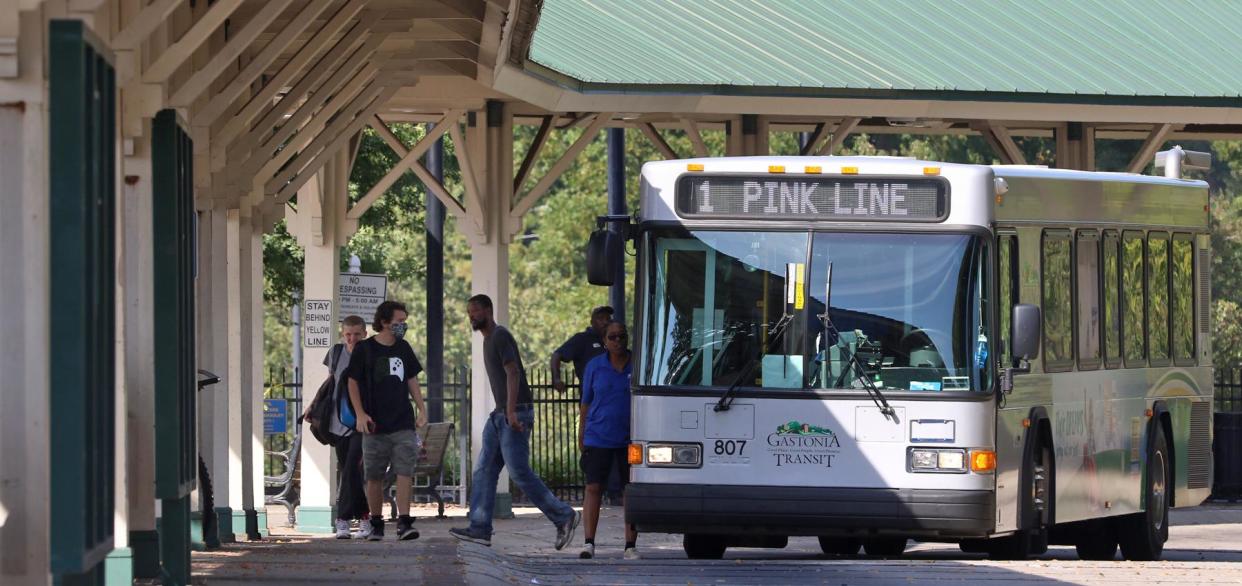City of Gastonia to get rid of fixed bus routes in place of new public transportation

At their first meeting of 2024, Gastonia City Council members voted unanimously to approve a large-scale change to the city’s public transportation system.
Beginning July 1, 2024, the city will transition away from fixed bus routes and move to a microtransit service.
According to Randi Gates, the Gastonia Department of Transportation director, the move will improve several aspects of the city’s current public transportation system and cut costs.
Currently, the city has six fixed bus routes, serviced by nine buses and two light traveling vehicles, and an ADA Paratransit service, which offers public transportation to Gastonia residents with disabilities.
Both the new system and the ADA Paratransit system function vary similarly to rideshare services like Uber and Lyft.
Residents in need of public transportation will be able to use an app or make a phone call to schedule a time to be picked up at their chosen location and dropped off directly at their destination.
Timeliness
Under the current system, each bus stop has an hour headway, meaning that it takes an hour for a bus to pass back by any given stop.
Gates said these wait times can turn a short errand into a long event.
At the Jan. 2 City Council meeting, Gates gave an example of a passenger living at Loray Mills who traveled to Summit Crossing for a doctor’s appointment.
The one-hour doctor's appointment took four hours due to lengthy wait times for buses.
The new service will only have a 15-minute headway, meaning that riders can expect their ride to arrive at their location 15 minutes after the scheduled time.
Substituting fixed bus routes with the microtransit service in the previous example, Gates said the rider would save nearly two hours of their time with the new service.
Cost
The cost to use the new rideshare program will be an increase from the current cost to ride the bus.
Bus fare in Gastonia is currently $1.25, and the city has currently not decided if it will increase. Gates said she believes fare in another city using this system is $2.50 per ride.
The total cost of the program for the city, however, will decrease.
The fiscal year 2024 budget funding the fixed bus route system costs the city $1.55 million for the year, while the total cost of the new system for fiscal year 2025 is set at $1.54 million.
The city will implement the new program using Via, a transportation company with a focus on Microtransit.
The $1.54 million budget includes vehicle costs, which the city of Gastonia will be responsible for providing. They will be eligible to get 80% of those initial purchase costs and maintenance expenses reimbursed by the Federal Transit Authority.
The FTA will fund driver pay, which is expected to be $20-$22 per hour.
Safety and more
The new transit vehicles will be able to accommodate car seats and small children, but there will be age restrictions that require children to be a certain age to travel by themselves.
Much like other ride-share services, vehicles operating under the new system will be able to make multiple stops along any given route to pick up more passengers.
Each of the new transit vehicles will also be equipped with a camera for security purposes.
The city plans to keep the current fleet of buses for the time being until the new system has become undeniably successful, Gates said.
Seven other North Carolina communities have successfully implemented a microtransit system, according to Gates.
The ADA Paratransit system will remain intact and as-is.
Gates said at the meeting that the microtransit system does have the potential to eventually go to the county Board of Commissioners to seek a county-wide expansion.
This article originally appeared on The Gaston Gazette: City of Gastonia to get rid of fixed bus routes

